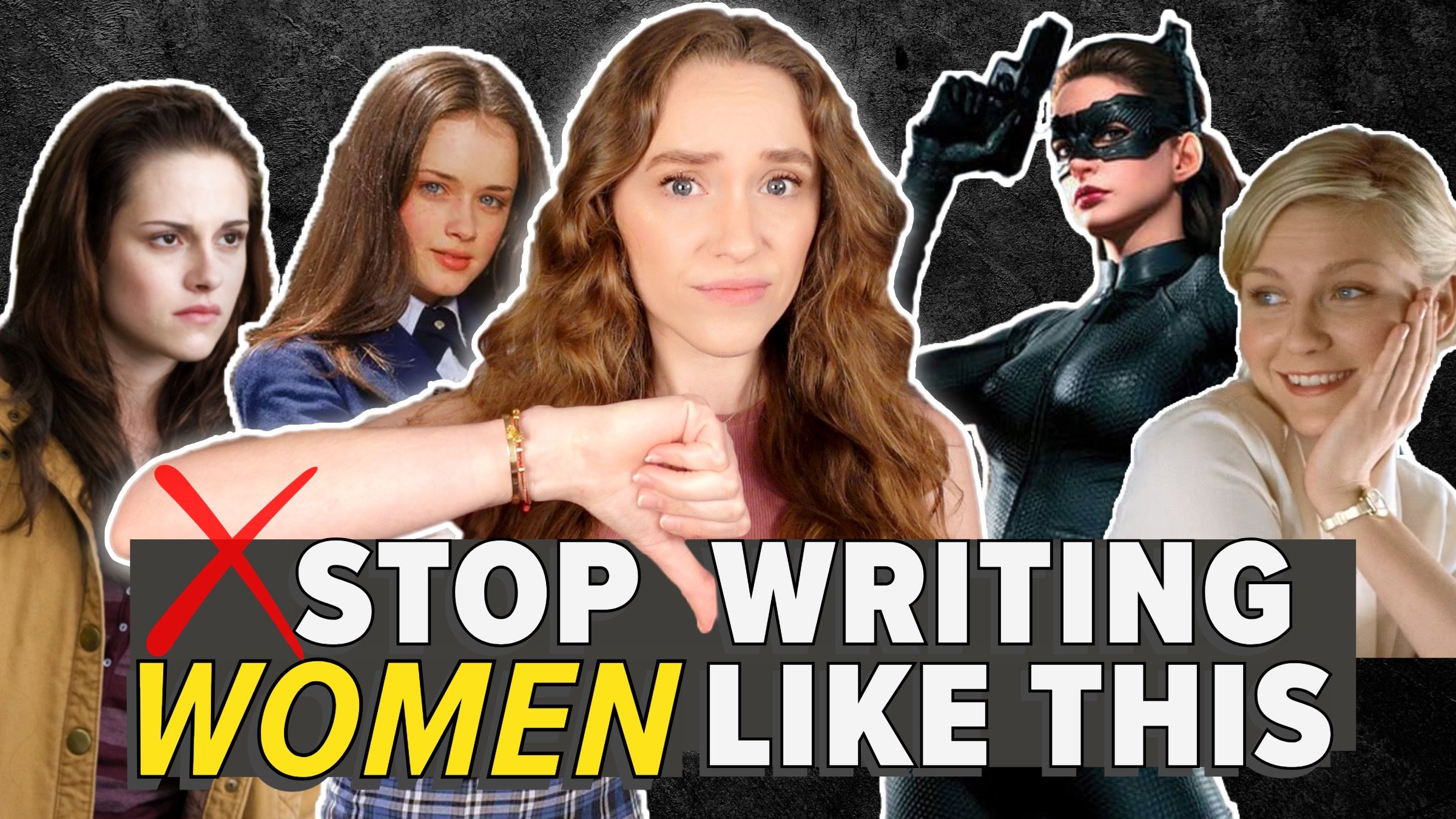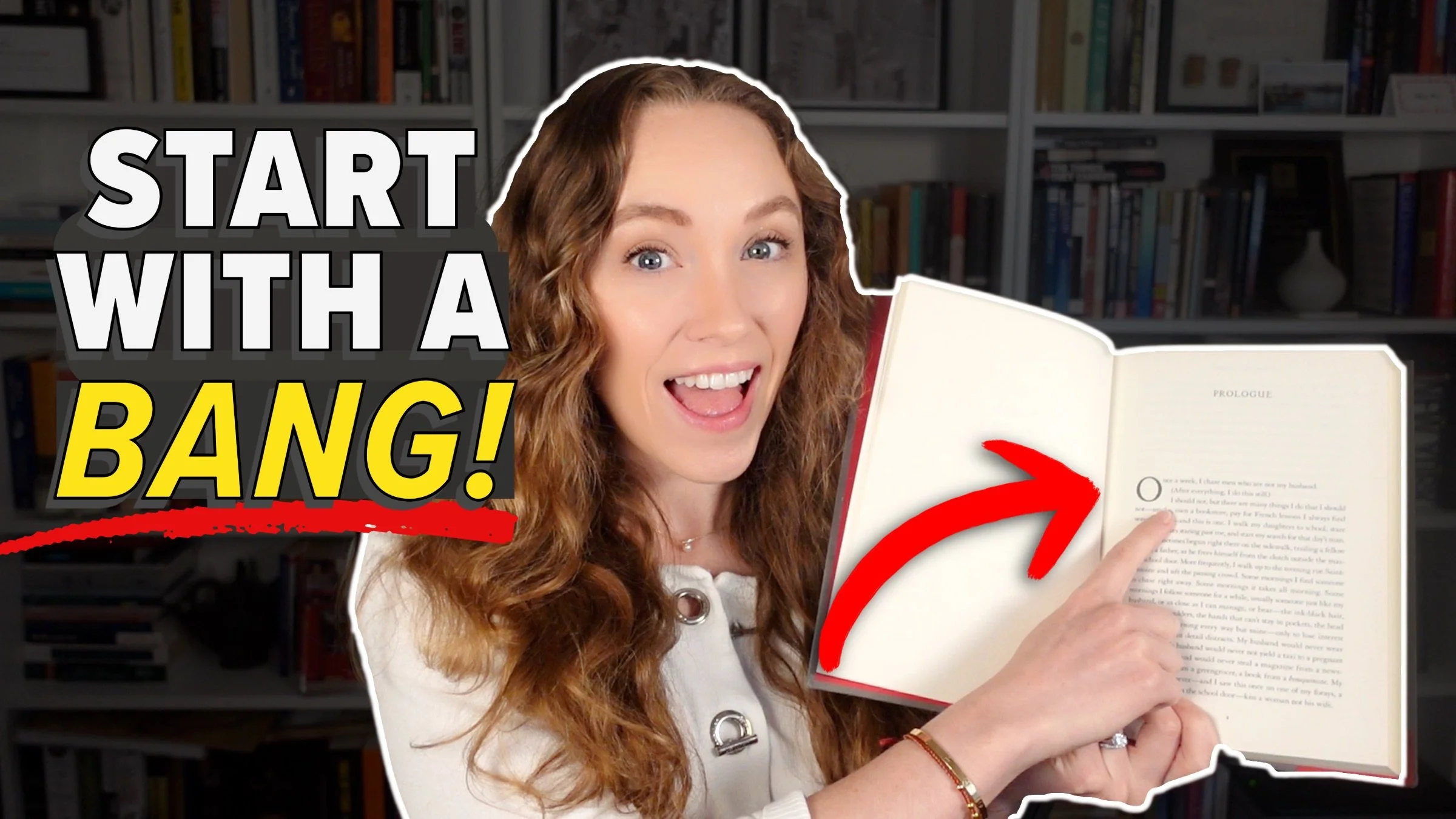9 Common Mistakes Writers Make with Female Characters
HIT PLAY OR READ THE POST BELOW:
The damsel in distress, the femme fatale, the manic pixie dream girl. It's 2025, so why do so many writers still write female characters that feel cliché, flat, and one-dimensional?
I've edited hundreds of novels over my career in book publishing, and the same issues with female characters pop up again and again. So, I'm revealing the nine most common mistakes writers make when writing female characters that make readers roll their eyes rather than root for them. And guess what? It's not just male writers who make these mistakes — women writers do, too! Once you can spot these issues, you'll know exactly how to make your female characters more believable, authentic, and multifaceted.
1. She only exists to serve others
Your female character may very well be a wife, mother, or caregiver. But if her entire function in the story is just to serve others and support their emotional and physical needs, she isn't going to be compelling. What are her personal desires and goals outside of all of her relationships? What does she want for herself? Romantic and family relationships are key parts of life and therefore are important in fiction writing, especially in genres like women's fiction and romance. But these relationships should ideally have a give and take rather than the female character by default always being in the serving and giving role.
For example, I recently edited a novel that had a steamy scene written from the female character's perspective, but the entire scene focused on what she was doing for his pleasure. I had no idea how she was feeling or what she was experiencing in the scene at all. I couldn't even tell if she was enjoying the experience herself because I had no insight into what she was thinking or feeling. So, make sure that your female characters’ individualities don't get lost in them always serving others in their relationships.
If you want to gut-check this in your own manuscript, try applying the Bechdel test. Do your female characters have a conversation about something other than a man? I'd extend this to include their family, too. Do they have their own goals, motivations, and desires completely separate from their romantic and familial relationships?
2. She objectifies herself
It sounds silly, but it shows up in manuscripts all the time, especially when a writer is trying to describe how a female character looks from within her own perspective. But it just ends up sounding like she has turned the male gaze upon herself. It's not that noticing her own body is unrealistic — of course, women are hyper-aware of how they look — it's that the way she describes herself feels out of sync with how she would think.
For example, I recently edited a novel written by a man where the female character noticed her short, tight skirt and shapely butt in the mirror. Even if the character did indeed wear a short, tight skirt and have a shapely butt, would she really use those words to describe herself?
Here's what I recommended to that author: stay in character. If you're writing in first person, that means your language should inhabit that character's mind and body. Instead, perhaps she notices that her skirt is riding up, or that she needs to adjust her underwear, or that her skirt fits a bit tighter than it did two months ago. That gets the same information across without breaking character.
3. She’s too passive
If you have a female main character, listen up. Is she actually pushing the plot forward? Does she have agency in the story? Is she making decisions that directly influence events? Too often, female main characters come across as reactive only. This is where the damsel in distress stereotype comes from. She has no particular goal of her own, and she just waits around while other people and forces outside of her control decide her fate and (hopefully) save her. As a result, it feels like she's a ball in a pinball machine just getting kicked around. That's not what readers want. An interesting plot shows your main character actively pursuing something. That goes for both male and female protagonists. Once you establish a clear objective for your female character and show her actively working toward it, then you can put obstacles in her way.
A common example of a passive damsel in distress character is Bella from Twilight. Her relationship with Edward essentially becomes her entire identity. She doesn't really have a clear goal for herself independent of him, and she relies on him and Jacob to save her from dangerous situations. As a result, she feels less like a dynamic protagonist and more like a prop. Make sure that things don't just happen to your female main character, but that she makes things happen.
4. She’s never vulnerable
The stealthy assassin with the perfect shot. The girlboss CEO who never cries. The femme fatale who seduces anyone who makes eye contact with her. These strong female characters came as rebuttals to the damsel in distress cliché, but they're not the solution to writing women effectively.
Hold on — I thought it was a good thing to write a strong female character. Sure, until she becomes so fearless, so tough, so hyper-competent that she's emotionally bulletproof. As a result, we don't connect with her at all because she doesn't show her humanity. The key to making any character compelling is giving them vulnerabilities, because emotional complexity is what makes a character strong, authentic, and relatable. So, if you have a strong female character, make sure that you're also showing her moments of self-doubt, her regrets, the memories that creep up late at night. Show us her deepest fears, the secrets she's harboring. She can present to the outside world as stoic and confident, but the reader needs to see the soft layer under the surface.
5. She only has one personality trait
This is a female character who has one vibe and nothing else to her. She might be the shy bookworm, the sporty tomboy, or the manic pixie dream girl who saves the brooding male lead from himself. While a female character can certainly be quiet or athletic or quirky, the problem happens when that's all that she is. When you limit your female character to a single defining trait — especially when that trait aligns with a romantic stereotype — you rob her of depth. Real people are walking contradictions. They have clashing parts of their personalities that don't necessarily make sense on paper, so your characters should, too.
Take Elle Woods from Legally Blonde. On the surface, she's an ultra-feminine, seemingly superficial sorority queen, but she defies the dumb blonde stereotype when she displays her sharp intellect at Harvard Law School. There are many questions you can ask yourself to bring your characters to life, but especially for female characters, I like to start with this one: “What's something about her that would genuinely surprise people?”
6. Trauma for the sake of it
It's becoming increasingly common in fiction writing to have female characters who have experienced abuse, assault, or extreme loss. But giving your female character a traumatic backstory without properly exploring it in the story will come off as lazy writing. You think you're giving her depth and layers, but really you're just slapping backstory on haphazardly and not thinking it through.
If your character has experienced trauma, that needs to shape her entire worldview. It would likely affect her relationships and her internal conflicts, and she would likely be grappling with that trauma throughout the entire story. We should see that on the page. Don't just toss trauma into your story like it's a flavor packet to make your character more complex — make sure it's woven throughout the story meaningfully.
Here's a question to ask to determine if a traumatic past is really necessary for your character: if I removed this traumatic event, does the character still make sense? If the answer is yes, you probably don't need the trauma after all. So, either omit it or make sure it's justified.
7. She’s melodramatic
You've probably read some kind of dialogue like this: “I gave you everything, my whole life for the past 10 years, and now you're just going to walk away like I meant nothing to you. I simply cannot believe this!!!” Notice the use of multiple exclamation points and all caps to emphasize the drama. This character probably goes on to sob uncontrollably or slam the door on her way out — or both. When you write like this, you're turning your female character into a walking soap opera.
I'm not saying female characters can't be emotional. Of course, women cry, women yell, women feel things deeply. But when every line out of your character's mouth sounds overdone like this, they'll come across like a caricature. Not every dramatic scene needs verbal fireworks. Oftentimes, a subtle, quiet display of emotion is much more powerful than a dramatic monologue.
And remember that the real emotional impact often lies in what your character isn't saying. It's the tension between what she feels inside and what she's displaying externally. After all, rarely do people say exactly what they feel. Instead, they say things — or don’t say things — to get a certain response or reaction from the other person, even if it doesn't match what they're feeling internally. So, in dramatic moments, make sure to bring us into the character's interiority. Maybe rather than lamenting that her fiancé is leaving her after 10 years, your character just silently takes off her engagement ring and flushes it down the toilet. That’ll show us that she’s guarding her emotions — and will feel so much more charged and compelling.
8. Pregnancy as a plot device
This one might ruffle some feathers, but I can't be the only one who feels this way. Pregnancies — especially unplanned pregnancies — are often used as plot devices, either as a sudden twist to heighten the drama, a development that raises the stakes and forces the female character's hand, or worse, as a means of pushing the male lead into emotional growth. After the pregnancy, the entire narrative shifts to revolve around it, regardless of what the conflict was before. When used in this way, pregnancy can come across as a cheap trick that reduces your female character. It feels like her personality, her agency, and her goals all disappear the moment that test comes back positive.
I'm not saying pregnancy can't be a part of your female character's journey or arc — of course it can. It's a huge part of many women's lives. But, as I mentioned with the traumatic backstory, make sure that it's actually serving the story and feels justified. It should be rooted in that character's own emotional journey, not just slapped on to raise the stakes or heighten the drama. Ask yourself: how is the pregnancy critical to this character's development?
9. She needs a “happily ever after”
How does your female character's arc end? So many stories that center on female characters end with an engagement, a marriage, or a baby. But your female character’s ending doesn't always have to be tied to this image of a perfect, happy domestic life. I'll admit that some genres — especially commercial romance novels — often end with these traditional happily ever afters, which is totally fine if that's what you're writing and what your reader expects. But if you're not writing romance, don't feel like your female character's story has to end with one of these milestones, especially if her arc didn’t revolve around her pursuing that in the first place.
Writers will often end their story with a perfectly solid resolution, then tack on an epilogue that fast-forwards one year later to show the female lead happy at home with her partner and baby, living the dream. But consider just ending at that earlier point where we've seen the female character achieve her objective and resolve her conflict. That's just as compelling, and you can still hint at a picture-perfect domestic life to come without actually showing it on the page. Perhaps your female character doesn’t get a happy ending at all — that’s valid, too. For an effective ending, let her ending be tailored to her unique arc. At the end of the novel, what we care most about is seeing how she has transformed — not that she's checked off the list of life milestones.






